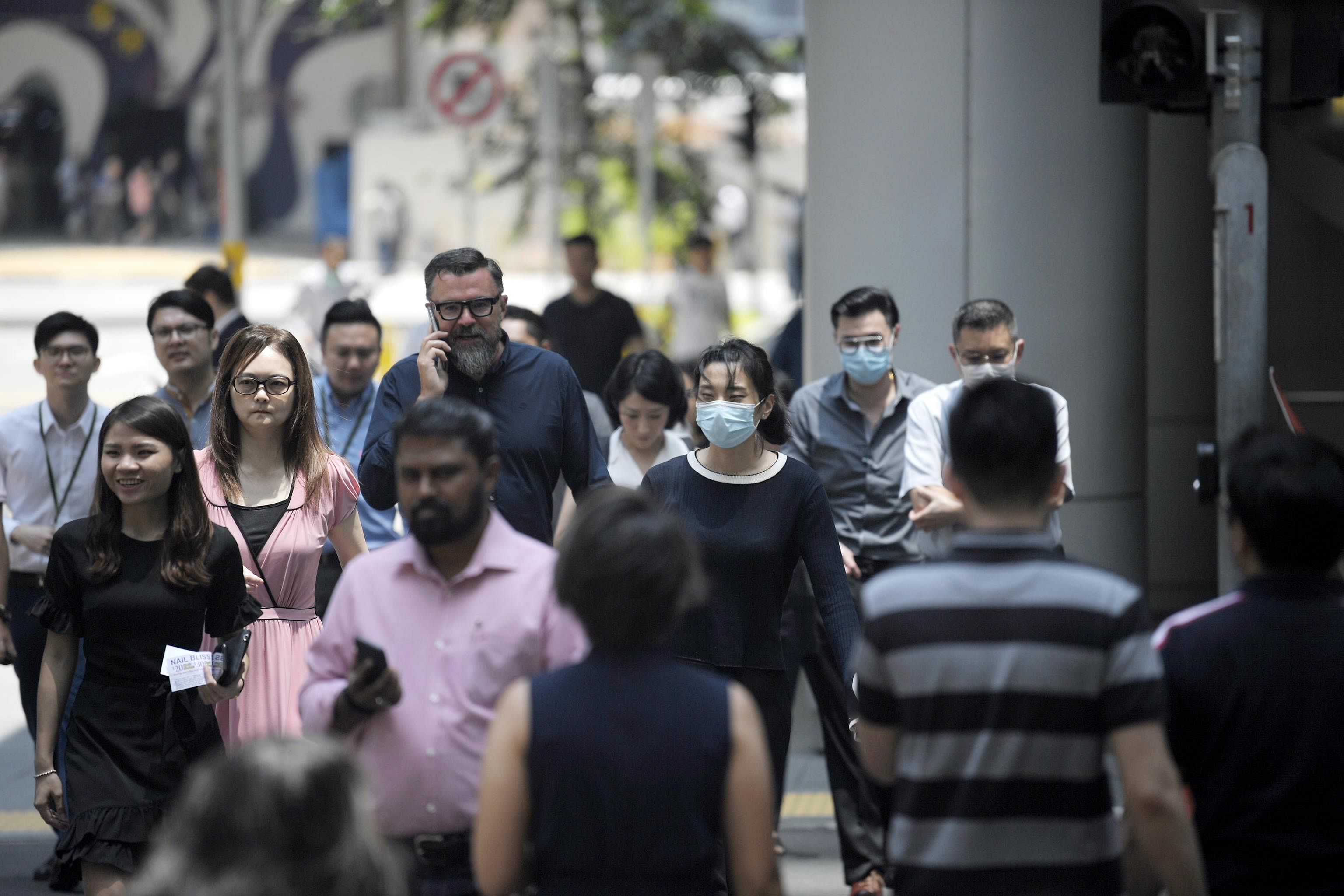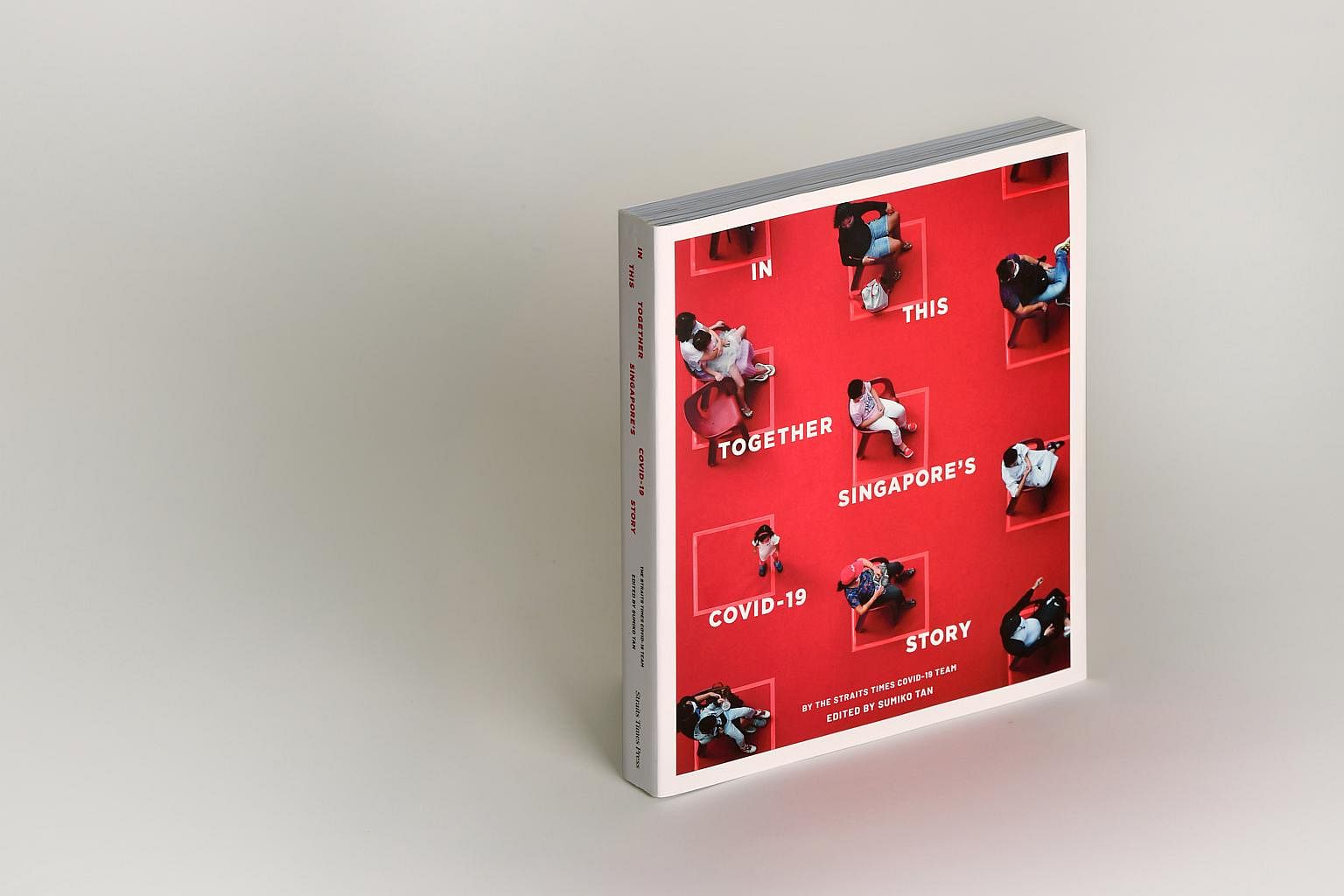'I would rather overreact than underreact': PM Lee looks back at 2020 circuit breaker, including mask policy U-turn


SINGAPORE - On April 1, 2020, the Cabinet met and discussed whether to impose a circuit breaker, given the rising number of Covid-19 community cases.
There were differing views on whether to lock down the country or wait a little bit longer, recounted Prime Minister Lee Hsien Loong in an interview for a new book chronicling Singapore's fight against the coronavirus.
"My view looking at the numbers and just eyeballing it was that it was clearly heading in a bad direction and we should move. There was no point waiting," he said.
"It was a very big decision. So I told the ministers: We sleep on this, we meet again tomorrow... If I'm going to act, I would rather overreact than underreact."
When the decision was made to go ahead, the announcement was for a four-week period of measures. "But we knew most likely we would have to extend that," said PM Lee in the book. The circuit breaker eventually lasted from April 7 till June 1.
Titled In This Together: Singapore's Covid-19 Story and published by Straits Times Press, the book contains essays by ST journalists who interviewed more than 300 people and pieced together critical moments over the two years since the virus first reached Singapore on Jan 23, 2020.
In chapters detailing the Government's responses to what PM Lee described as the "crisis of our generation", he also spoke candidly on the apparent U-turn on the mask-wearing policy in early months and shared how he personally coped with the pandemic.
At the beginning, as global news reports on what was then called the "Wuhan virus" filtered through, the Ministry of Health had, on Jan 2, asked Singaporeans to wear a mask only if they had symptoms such as a cough or runny nose - an advisory which progressed to the Government discouraging masking up if one was well.
On Feb 10, however, some doctors called for the opposite, asking people to keep a mask on when leaving their homes due to the possibility of asymptomatic transmission.
The Government finally changed tack in April and mandated masking up unless a person was exercising or below the age of two.
"In retrospect, I think we would have said right from the beginning, please don't scramble for the surgical masks, save those for the healthcare workers, but the rest of you, let's make our own masks," said PM Lee in the book.
"We should have changed our position earlier and encouraged people to use reusable masks, improvise."
He explained that the Government's initial stance was based on the World Health Organisation's (WHO) early advice that masks were not helpful and might provide a false sense of security. People were also scrambling for surgical masks and Singapore did not have enough for everyone at the time.
The WHO amended its advice only in June, to advocate mask-wearing in public.
"I think they may not always have been ahead of the curve in terms of advice. Advice on travel, for example, advice on how the virus is transmitted," said PM Lee.
"Part of the difficulty is that they have to respond to multiple constituencies, and different countries push them in different directions. So the WHO has its limitations, but without them, we would be worse off."

He said Singapore could take information from the likes of the WHO as a reference point, but make its own scientific judgments based on its own capabilities. "We should have done that with masks."
Elsewhere in the book, he shared that keeping calm was his primary way of managing "ups and downs" of the crisis.
"You do your best, but you've got to maintain a certain detachment and equanimity and not let yourself be frazzled," he said, adding that he also started meditating and exercising daily while going on weekend walks and taking photographs to "keep the mind switched to a different wavelength".
PM Lee acknowledged that being unable to go out with his entire family to have a meal was one constraint brought about by Covid-19, though he had the "great joy" of a granddaughter living with him during the circuit breaker.
In a written foreword for the book, he said the pandemic has been a severe test for all Singaporeans - and if there were any questions over whether the younger generation have the courage, grit and resolve of their seniors, their response has been a reassuring and convincing one.
And as he concluded: "Many years from now, when our grandchildren or great-grandchildren ask you what you did in those awful years of the pandemic, we will be able to tell them, with quiet pride: 'I did my part.'"

In This Together: Singapore's Covid-19 Story retails for $28 (with GST) at major bookstores.
It is also available online at the Straits Times Press website.
This article was first published in The Straits Times. Permission required for reproduction.